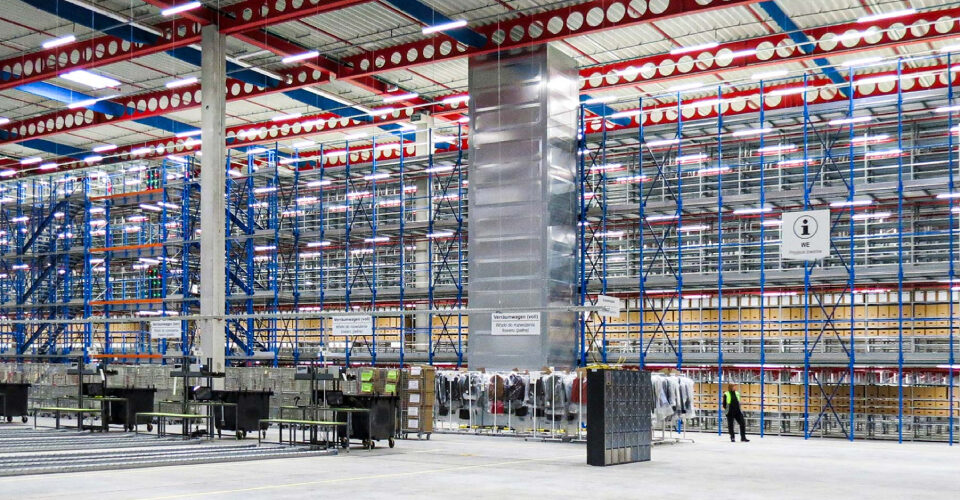Exploring the Top Institute in Chennai for E-commerce Training

A Guide to Ecommerce Delivery Strategy
March 25, 2022In the digital realm of buying and selling, how users feel and interact with websites can make or break a business. Seeking out the Best Software Training Institute in Chennai (https://www.aimoretechnologies.com/) for this knowledge is crucial for those shaping these online spaces. Such centers provide the know-how to create engaging e-commerce sites that lead to more sales. They focus on immersive, straightforward, visually pleasing designs that make shoppers happy and more likely to buy again. As we delve into how design affects shoppers’ actions, we will shed light on current shifts and tactics reshaping online trade.
The Growth of Online Shopping and Designs Influence
Online shopping roots stretch back to the 1960s, with the sale of a Sting CD in 1994 bringing it into the everyday spotlight. Since its early days as an essential buying and selling process, it has grown to include many business styles and platforms, meeting varied shoppers’ wants and likes.
Today, the importance of User Experience (UX) and User Interface (UI) design in keeping shoppers happy and engaged is more apparent than ever. Good design ensures sites are easy to use, look great, and offer a smooth shopping journey. With data and design tactics, sites can provide tailored visits that speak to shoppers, drawing them back and building brand trust.
The recent global health crisis has pushed more people to shop online, with digital spaces becoming more crucial than ever. As physical shops dealt with limits and shutdowns, online stores had to quickly improve their design to serve the new and existing digital crowd. This quick change has set a higher bar for the online shopping journey.
As online shopping keeps changing, it is evident that design will remain crucial to its expansion. New tech like Artificial Intelligence (AI), Augmented Reality (AR), and Virtual Reality (VR) are starting to influence the future of online trade, offering more profound and more tailored shopping moments. As these tools grow more common, skill in design will be essential in using their full potential and ensuring online platforms not only draw in shoppers but also keep them. To know more Click Here.
New Tech Making Shopping Better
Let us look at how new tech is changing the way we shop
- Artificial Intelligence (AI) personalizes the online journey by using shopper data to suggest products and fine-tune pricing, boosting loyalty and sales.
- Augmented Reality (AR) and Virtual Reality (VR) let shoppers see how products would look in their space or on them, lowering the chance of returns and increasing satisfaction.
- Blockchain adds to transaction safety and supply chain openness. Its shared records keep shoppers’ data and payments safe and clear, building trust and making operations smoother.
- The Internet of Things (IoT) links devices for a unified shopping journey. Smart devices can auto-buy goods and manage stock, offering personalized experiences based on live data.
As these tools blend and grow, they are shaping a future of online trade that is quicker to respond, easier to use, and more tailored, improving the overall user journey.
How AI Personalizes Online Shopping
Artificial intelligence (AI) is changing online trade by making shopping more personal. AI uses learning systems to sift through shoppers’ habits, and past buys to craft product selections and suggestions. This personal touch leads to a more engaging journey and happier shoppers.
AI also shapes product suggestions and fluid pricing tactics. By guessing shoppers’ moves, AI helps firms offer products that match shoppers’ likes and tweak prices on the fly, making them more competitive and profitable.
In marketing and shopper help, AI-driven campaigns and chatbots offer focused content and fast support, building shopper loyalty.
As AI keeps bringing new ideas to online trade, it opens doors for other tools to further enrich the shopping journey, like the profound experiences offered by AR and VR.
The Effect of Augmented & Virtual Reality on Online Trade
In the fast-paced world of online trade, Augmented Reality (AR) and Virtual Reality (VR) are reshaping the shopping journey. These tools give shoppers a deep experience beyond just seeing product photos. AR lets shoppers try products virtually, seeing how clothes or furniture would fit in their space without leaving home. VR goes further, offering complete product tours, which are handy for oversized items like furniture.
Using AR and VR on trade sites has been shown to significantly lower return rates. When shoppers get a clearer picture of the product through virtual trips and tours, they feel more sure about their buys, leading to greater satisfaction and fewer returns. This is good for the shopper and the retailer, as it reduces the costs and effort tied to returns.
Online stores quickly use AR and VR to offer more detailed looks at products and interactive demos. This attention to detail and interactivity builds a more vital link between the shopper and the product, often leading to more sales. The move to include these tools in online trade is strategic and boosts shopper engagement and happiness.
As online trade keeps innovating, ensuring online buys are safe stays in the mind. This focus on safety leads to exploring new solutions like blockchain, which further improve trust and honesty in the digital shopping journey.

Blockchains Part in Safe Online Buys
Blockchain is changing how safe online buys are. Its shared ledger gives a clear and lasting record, improving trust between shoppers and firms. By cutting out intermediaries, blockchain lowers costs and speeds up the process. Using digital currencies through blockchain makes international buys easier in payments, cutting out the need for currency changes and related fees. As online trade keeps taking up new tech, using blockchain is a big step toward a safer and more effective digital market. Blockchains mixed with other tools like AI and IoT prepare for a future where online trade is not just safe but also personal and efficient.
How IoT Affects Online Trade
IoT devices, like smart fridges and fitness bands, gather data on what users like and do. This info is then used to make the shopping journey smooth. For example, a smart fridge can track what’s used and auto-buy groceries before they run out, ensuring the shopper never lacks needed items. Similarly, wearable devices can suggest health products based on the user’s activity and aim.
Moreover, IoT is essential in keeping track of stock. Sellers use IoT sensors to watch stock levels live, letting them refill products well and avoid running out. This makes stock management better and ensures shoppers can get what they need when they need it. Personalized shopping moments are improving through IoT by giving tailored suggestions and deals to each shopper, thus increasing happiness and loyalty.
The info from IoT devices can guide designers in making interfaces that are easy to use and meet each shopper’s needs. Doing so can significantly affect sales, as a good interface can simplify the buying process and encourage shoppers to finish their buys.
Read More: A Guide to Ecommerce Delivery Strategy
Design Trends Shaping Online Sales
Some key design trends are having a big impact on online sales, like
- Personal touches and options, with sites using new tech to shape shopping moments to fit personal likes.
- An easy-to-use interface that simplifies finding info, cutting down on people leaving the site and helping them finish their buys.
These tactics are not just for drawing in shoppers. They are vital to keeping them and building a loyal shopper base in a crowded digital market.
Design Tactics for Keeping Online Shoppers
In the tough world of online trade, keeping shoppers is just as important as getting new ones. A well-thought-out design is vital not just for bringing shoppers in but also for making them stay. By using smart design changes, firms can offer personal shopper help that builds trust and leads to more buys.
Personal Shopper Help The Core of Design
Knowing and meeting each shopper’s specific wants and likes is vital. A design that is easy to use and reacts well can make shoppers feel seen and understood, making them more likely to buy again. Article 48 shows how vital the shopper journey is in creating trust in a brand.
Practical Tips for Better Design
For firms looking to improve shopper loyalty through design, these practical tips are vital
- Make the site easy to move around to help shoppers find what they want.
- Use shopper info to offer fitting product suggestions and deals.
- Make the checkout quick and easy, lowering the chance of shoppers leaving without buying.
- Make sure shopper help is easy to get to and can offer personal aid.
- Keep updating the design to reflect shopper feedback and new trends.
Adapting to changing shopper expectations is crucial, and by using these tactics, firms can not just meet but surpass what today’s online shoppers are looking for.
In online trade, where shopper happiness is everything, using design thoughtfully shows a brand’s dedication to its shoppers.
Mastering Design to Boost Online Trade
In the busy online market, e-commerce sites battle for shopper notice in a sea of rivals. The key to standing out is top-notch design, which directly affects whether shoppers buy. Advanced training from Best Software Training Institute in Chennai helps designers and developers shape user journeys, streamline buying steps, and ensure every digital interaction connects with the shopper. Being great in this field is a goal and a must for online success. For those eager to sharpen their skills and lead in making gripping online shopping spots, reaching out to seasoned pros is vital. Get in touch to learn more. They are ready to turn your design skills into tangible gains in shopper engagement, loyalty, and sales.




